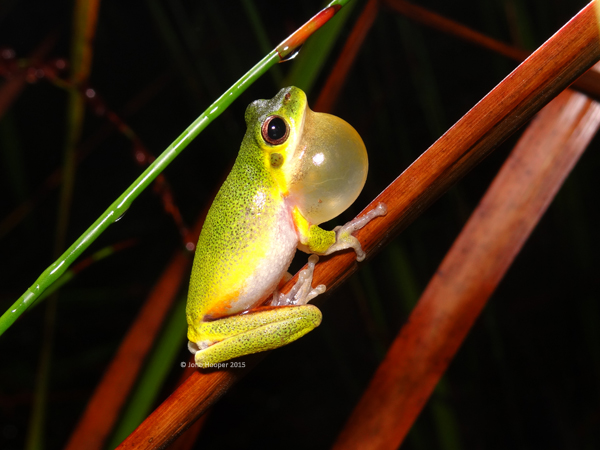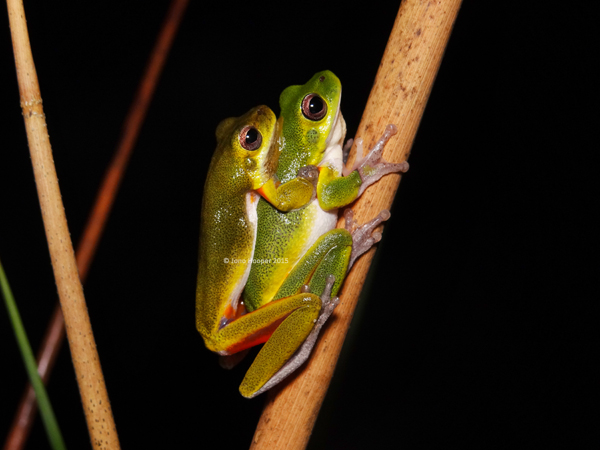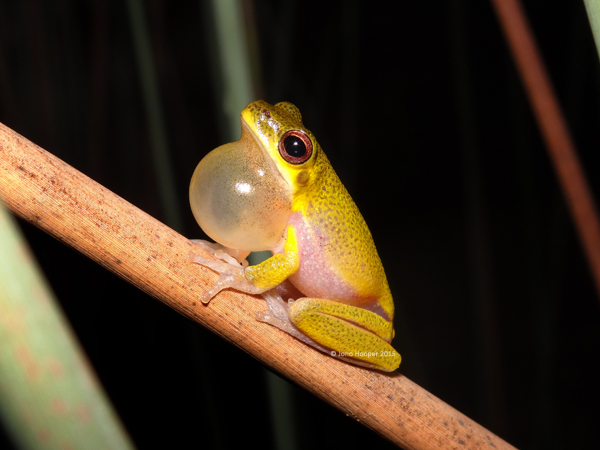The greater Sunshine Coast region is home to three species of ‘acid frog’; the Wallum Sedgefrog (Litoria olongburensis), Wallum Froglet (Crinia tinnula) and Wallum Rocketfrog (Litoria freycineti). All these species can tolerate acidic watery environments of pH 3.5 – 6 and are usually found in tanin-stained, low nutrient heathlands, sedgelands and wallum country. There is however a fourth ‘acid frog’ species that only occurs between Rainbow Beach and Noosa, QLD. Cue Monday night’s adventure!
I met up with fellow froggers Craig and Donna from Cootharaba and together we travelled up to Great Sandy National Park (of which I hadn’t been to yet, shamefully). We had our sights set on finding the Cooloola Sedgefrog (Litoria cooloolensis). These frogs are very similar and no doubt related to the more ‘common’ Eastern Segdefrog (Litoria fallax), however have been isolated and adapted to the unique acidic waters of this region. The evening temperature was still hovering about the low twenties and the area had 7mm of rain during the day – perfect for these frogs. And so after the 1 (1/2) hour drive and 30 minute walk we found these special frogs.






These acid frogs are threatened by urbanisation and subsequent urban development (cause so many of us like the beaches), high nutrient inputs, introduction of exotic fish and imbalances in the water table/changes to drainage flows. As a result all these acid frogs are considered ‘vulnerable’, particularly the Wallum Sedgefrog which is federally recognised as a protected species.
Despite the ‘doom and gloom’ it was refreshing to see this species going about their own business in a relatively undisturbed and protected environment!

